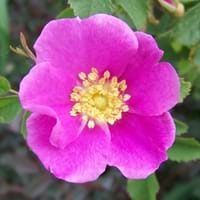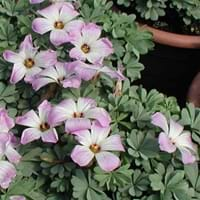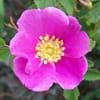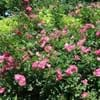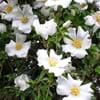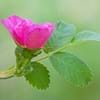Life Span
Perennial
Perennial
Type
Flowering Plants
Bulb or Corm or Tuber
Origin
Central America, Northern America
Argentina, Chile
Types
Not Available
Not available
Habitat
disturbed sites, Roadsides, stream banks, Woods
Shaded sites, Woodlands
USDA Hardiness Zone
Not Available
7-9
AHS Heat Zone
Not Available
10-3
Sunset Zone
Not Available
21,22
Habit
Upright/Erect
Clump-Forming
Flower Color
Baby Pink, Lavender, Pink, White
White, Fuchsia, Rose, Violet
Flower Color Modifier
Bicolor
Bicolor
Fruit Color
Non Fruiting Plant
Not Available
Leaf Color in Spring
Green, Gray Green, Dark Green
Light Green, Gray Green
Leaf Color in Summer
Green
Light Green
Leaf Color in Fall
Green, Gray Green, Dark Green
Several shades of Green
Leaf Color in Winter
Green, Dark Green
Light Green
Leaf Shape
Pinnate
Heart-shaped
Plant Season
Spring, Summer
Spring, Summer, Fall
Sunlight
Partial shade, Partial Sun
Full Sun, Partial Sun, Partial shade
Growth Rate
Medium
Medium
Type of Soil
Clay, Loam
Clay, Loam, Sand
The pH of Soil
Alkaline
Neutral
Soil Drainage
Well drained
Well drained
Bloom Time
Spring, Summer
Late Spring, Early Summer, Summer, Late Summer, Early Fall, Fall
Tolerances
Wet Site
Drought
Where to Plant?
Container, Ground, Pot
Ground, Pot
How to Plant?
Seedlings, Stem Planting
Divison, Seedlings
Plant Maintenance
Medium
Medium
Watering Requirements
Keep the ground moist but not water-logged
Water in the early morning hours
In Summer
Lots of watering
Lots of watering
In Spring
Moderate
Moderate
In Winter
Average Water
Average Water
Soil Type
Clay, Loam
Clay, Loam, Sand
Soil Drainage Capacity
Well drained
Well drained
Sun Exposure
Partial shade, Partial Sun
Full Sun, Partial Sun, Partial shade
Pruning
cut main flower spike, Remove dead branches, Remove dead or diseased plant parts
Remove damaged leaves, Remove dead branches, Remove dead leaves
Fertilizers
Apply 10-10-10 amount, as it is a flowering plant, use high phosphorous content fertilizer
All-Purpose Liquid Fertilizer
Pests and Diseases
Grasshoppers
Red blotch
Plant Tolerance
Drought, Wet Site
Drought
Flower Petal Number
Single
Single
Foliage Texture
Medium
Medium
Foliage Sheen
Matte
Matte
Attracts
Birds, Small mammals
Insects
Allergy
Constipation, Diarrhea, Headache, Heartburn, Nausea, Pain and fatigue, Stomach pain, Vomiting
Asthma, Depression
Aesthetic Uses
Bonsai, Bouquets, Cottage Garden, Showy Purposes
Cottage Garden, Formal Garden, Ground Cover, Showy Purposes
Beauty Benefits
Good for skin, Skin Problems
Not Available
Environmental Uses
Air purification, Food for birds
Air purification
Medicinal Uses
Astringent, Diuretic, Laxative, Vitamin C
Not Available
Part of Plant Used
Flowers, Rose Hip
Flowers
Other Uses
Making Perfumes, Used as Ornamental plant, Used for its medicinal properties
Basketary
Used As Indoor Plant
Yes
No
Used As Outdoor Plant
Yes
Yes
Garden Design
Feature Plant, Mixed Border
Alpine, Container, Houseplant, Mixed Border, Rock Garden / Wall
Botanical Name
Rosa woodsii
OXALIS adenophylla
Common Name
Woods Rose, Interior Rose
Chilean Wood Sorrel, Pink Buttercups, Pink Carpet Oxalis, Silver Shamrock
In Hindi
Woods Rose
Chilean Wood Sorrel
In German
Woods Rose
Chilean Wood Sorrel
In French
Woods Rose
Chilean Wood Sorrel
In Spanish
Woods Rose
Chilean Wood Sorrel
In Greek
Woods Rose
Chilean Wood Sorrel
In Portuguese
Woods Rose
Chilean Wood Sorrel
In Polish
Woods Rose
Chilean Wood Sorrel
In Latin
Woods Rose
Chilean Wood Sorrel
Phylum
Magnoliophyta
Magnoliophyta
Class
Magnoliopsida
Magnoliopsida
Family
Rosaceae
Oxalidaceae
Clade
Angiosperms, Eudicots, Rosids
Angiosperms, Eudicots, Rosids
Tribe
Not Available
Not Available
Subfamily
Not Available
Not Available
Number of Species
Not Available
Importance of Woods Rose and Chilean Wood Sorrel
Want to have the most appropriate plant for your garden? You might want to know the importance of Woods Rose and Chilean Wood Sorrel. Basically, these two plants vary in many aspects. Compare Woods Rose and Chilean Wood Sorrel as they differ in many characteristics such as their life, care, benefits, facts, etc. Every gardener must at least have the slightest clue about the plants he wants to plant in his garden. Compare their benefits, which differ in many ways like facts and uses. The medicinal use of Woods Rose is Astringent, Diuretic, Laxative and Vitamin C whereas of Chilean Wood Sorrel is Not Available. Woods Rose has beauty benefits as follows: Good for skin and Skin Problems while Chilean Wood Sorrel has beauty benefits as follows: Good for skin and Skin Problems.
Compare Facts of Woods Rose vs Chilean Wood Sorrel
How to choose the best garden plant for your garden depending upon its facts? Here garden plant comparison will help you to solve this query. Compare the facts of Woods Rose vs Chilean Wood Sorrel and know which one to choose. As garden plants have benefits and other uses, allergy is also a major drawback of plants for some people. Allergic reactions of Woods Rose are Constipation, Diarrhea, Headache, Heartburn, Nausea, Pain and fatigue, Stomach pain and Vomiting whereas of Chilean Wood Sorrel have Asthma and Depression respectively. Having a fruit bearing plant in your garden can be a plus point of your garden. Woods Rose has no showy fruits and Chilean Wood Sorrel has no showy fruits. Also Woods Rose is flowering and Chilean Wood Sorrel is not flowering . You can compare Woods Rose and Chilean Wood Sorrel facts and facts of other plants too.
